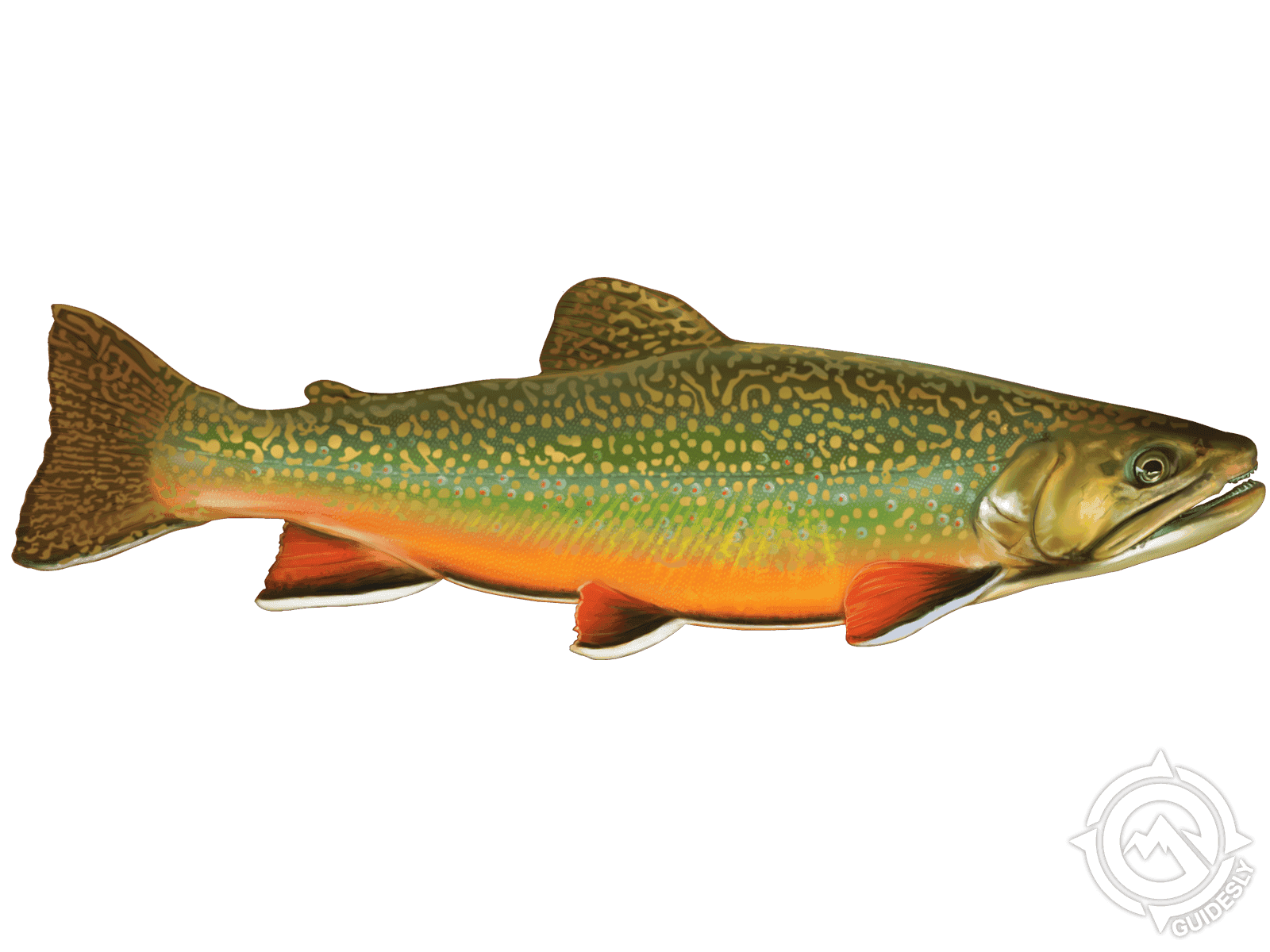Brook Trout

Species Details
Salvelinus Fontinalis
Salmonidae
Salmoniformes
Lake, River
1 - 10 lbs.
10" - 34"
Brook Trout (Salvelinus Fontinalis)
Description
Brook Trout is a small spirited and freshwater game fish that can easily be distinguished from other trout species by its unique colors. This fish has wavy stripes on the back and the head, which also appear on dorsal, adipose, and caudal fins. Brook trout has a milky brown belly and an olive-green back with yellow spots. The side has red or orange spots circled with blue. Pink lower fins have a white and black streak.
Size and Weight
Depending on the habitat, these fish can grow between 8-24 inches and weigh about 1-9.5 pounds.
Interesting Facts
• Brook trout are used as indicator species for polluted water.
• Their average life span is 5 years.
• The male develops a hump and bright colors when ready to mate.
The native trout family is closely related to salmon. A top fly fishing family of fish that are both tremendous game fish and tasty eating fish.
Distribution and Habitat
Brook trout are heavily populated in the northeastern United States and Canada, where they are native. They have been introduced in other areas and can now be found in the Great Lakes, and rivers and streams throughout parts of the United States, Canadian Maritimes, Labrador, and Newfoundland.

The Brook trout population is very intolerant of environmental changes. They are found in ponds, creeks, small rivers, streams, and lakes. They prefer low temperatures below 68 °F and clean water.
Spawning
The spawning season begins in late fall and early winter. Female Brook Trout choose a suitable spot with loose gravelly bottoms and lays the fertilized eggs. The eggs are then covered with gravel until they hatch in spring. Then, the juveniles move towards shallow water to find food and protection.
Diet
Brook trout usually feeds on worms, leeches, minnows, crayfish, amphibians, and insects. Some larger Brook trout also prey on small fish, mice, voles, lemmings, and shrews.
Fishing Techniques - How to Catch Brook Trout
Anglers love catching wild Brook Trout because of the challenge in difficulty catching this fish. Unlike the larger Rainbow Trout and Brown Trout, the Brook Trout is found in much smaller and remote rivers. They can be hiding in shallow areas near fallen trees and boulders.
Fly fishing for Brook Trout is usually preferred. A long fly rod and a good motion can be used to precisely place a hook into tight places which are often necessary on small streams especially with overhanging trees in the area.
For a bait angler, a spinning rod with small spinners and plugs can also be used. A snelled spinner with a worm is also a good option along with spoons, jigs, flies worms, minnows, small plugs, and live insects.







